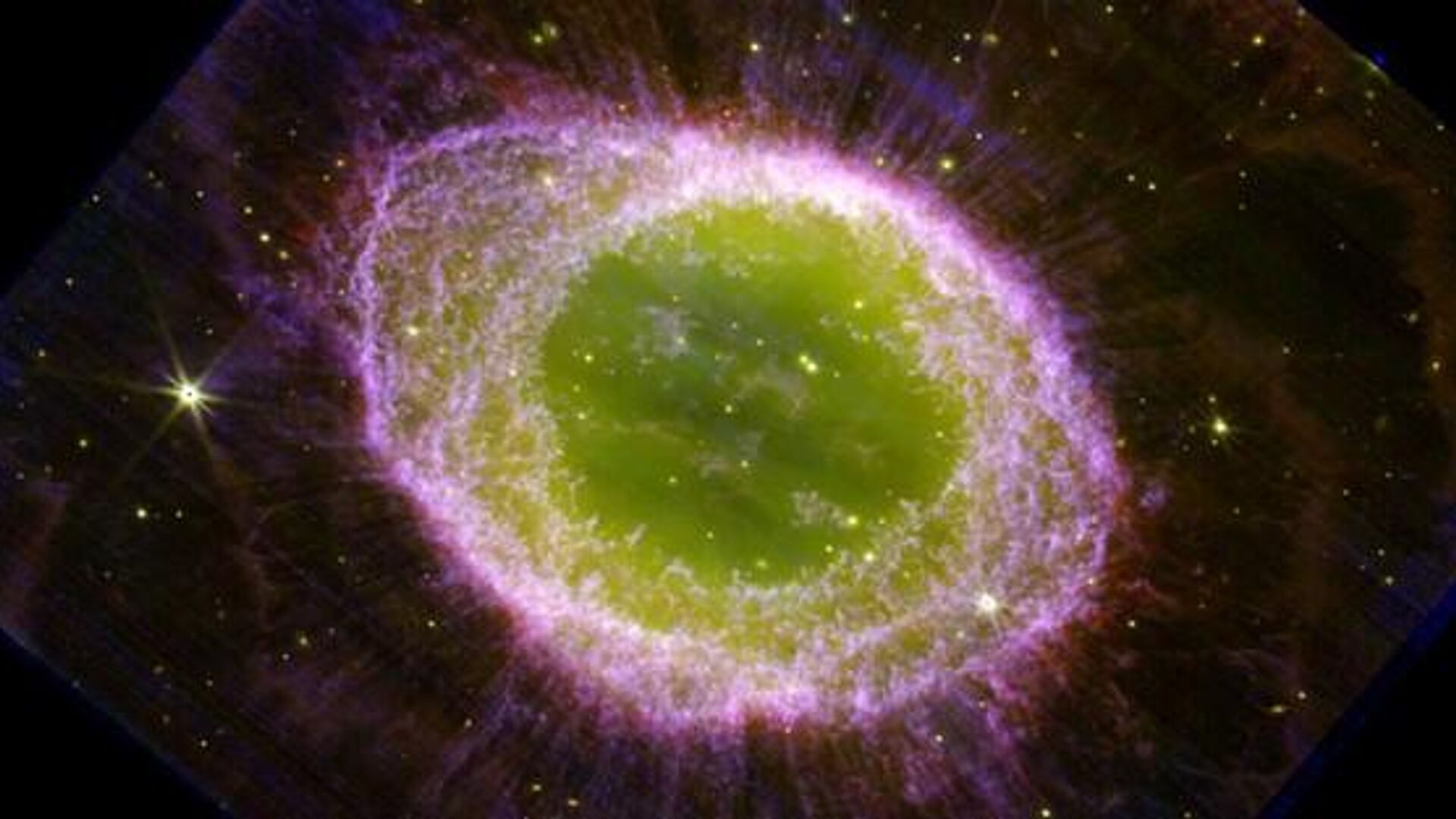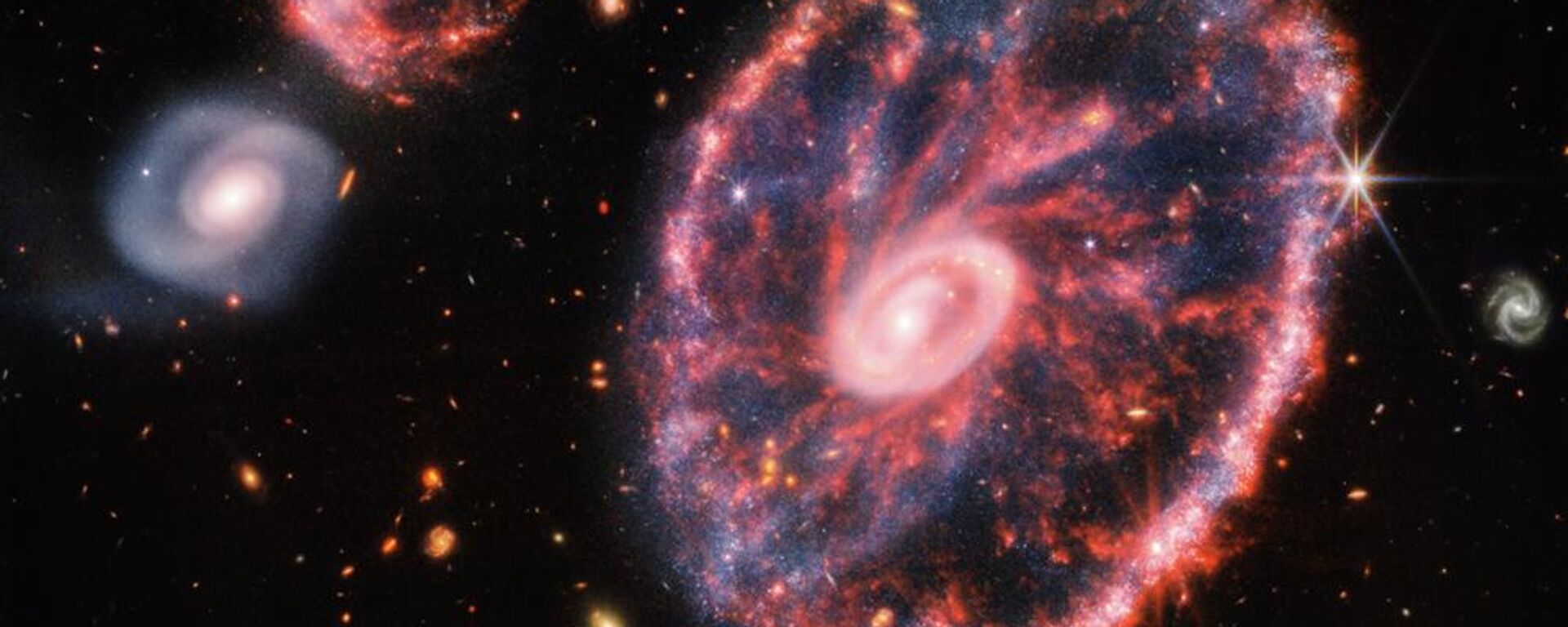Photos: Webb Space Telescope Reveals New Images of Ring Nebula
Subscribe
The images captured by James Webb Space Telescope (JWST) allow scientists to delve deeper inside the processes of stellar evolution, effectively allowing officials to gain valuable insights into the birth and death of stars.
The James Webb Space Telescope has unveiled breathtaking images of the Ring Nebula, showcasing the distant object like never before.
The planetary nebula, known as Messier 57 (M57), sits in the Lyra constellation approximately 2,200 light-years away and has been depicted as a mesmerizing green and purple eye in the cosmos.
"We are amazed by the details in the images, better than we have ever seen before. We always knew planetary nebulae were pretty. What we see now is spectacular," said Albert Zijlstra, professor in Astrophysics at the University of Manchester.
Astronomers are particularly excited about the JWST's findings because they offer unprecedented insight into the life and death of stars. The Ring Nebula is the remnants of a dead star, called a white dwarf, at its core, and its unique orientation allows astronomers to study its inner workings from our vantage point in the solar system.
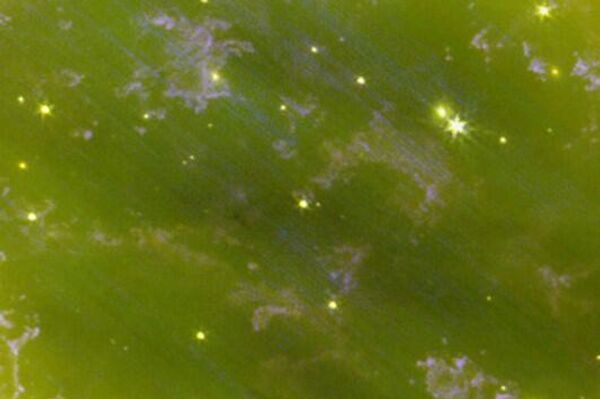
1/3
The close-up of the central parts of the image. The brightest star here is the dying, extremely hot central star.
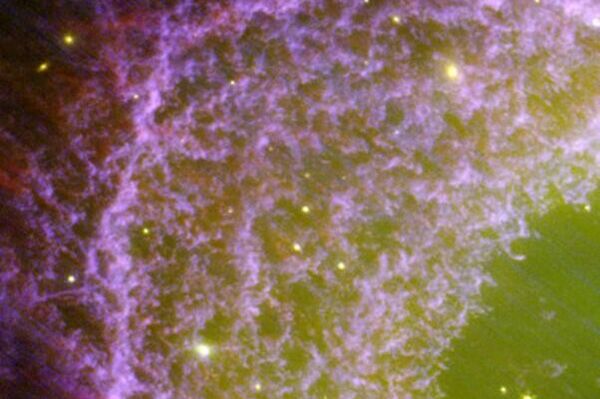
2/3
The close-up of part of the nebula shows that the ring consists of large numbers of small clumps. The team counts as many as 20,000 clumps.
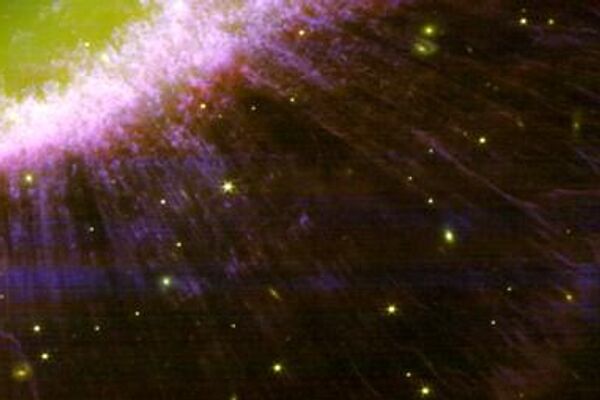
3/3
The close-up of the southern part of the outer halo, the part outside the main ring. The team finds several hundred linear features, pointing approximately at the central star. Their origin is not yet clear.
1/3
The close-up of the central parts of the image. The brightest star here is the dying, extremely hot central star.
2/3
The close-up of part of the nebula shows that the ring consists of large numbers of small clumps. The team counts as many as 20,000 clumps.
3/3
The close-up of the southern part of the outer halo, the part outside the main ring. The team finds several hundred linear features, pointing approximately at the central star. Their origin is not yet clear.
The observations of the Ring Nebula also provide a glimpse into what our own sun's future may hold. As stars similar to the sun exhaust their nuclear fuel, they go through a series of transformations that eventually lead to the creation of planetary nebulas like M57.
"The James Webb Space Telescope has provided us with an extraordinary view of the Ring Nebula that we've never seen before," University College London professor and co-lead scientist of the JWST Ring Nebula Imaging Project, Mike Barlow, said. "The high-resolution images not only showcase the intricate details of the nebula's expanding shell but also reveal the inner region around the central white dwarf in exquisite clarity."
By studying the Ring Nebula, scientists can better understand the complex celestial processes as well as learn about the chemical makeup of the gas and dust surrounding the dying star.

